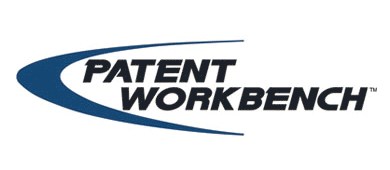[tweetmeme source=”Intellogist” only_single=false]
The PATINEX 2011 Expo in Seoul, Korea was a great event that provided numerous insights into the worldwide patent landscape. The two keynote speakers, US CAFC Chief Judge Randall R. Rader and USPTO Deputy Director Teresa Stanek Rea, were especially impressive and had a lot of interesting things to say about the future of the patent system in the United States.
What follows are some notes from what they said at PATINEX as well as some editorial insight.
US CAFC Chief Judge Randall R. Rader
Notes from the keynote:
Many of Judge Rader’s comments focused on international cooperation. Days before the Leahy-Smith America Invents Act was passed, he stressed that the US has learned that their first to invent system must change. Courts recognize that we need an international standard, and to that end Judge Rader and his colleagues must visit other major patenting authorities (including their top judges) and learn lessons–from Korea to hopefully Russia and Brazil in the future. Judge Rader further elaborated that every nation has brilliant people with access to the internet, able to make a contribution to the world patenting system. In the question and answer period, Judge Rader received a question about patent commercialization from a university professor in Korea. Judge Rader hinted that licensing could be an avenue for individual or smaller inventors to capitalize on their inventions.
Takeaway:
International uniformity is here in a general sense with the US switching to a first to file patenting system. The future unified classification system between the USPTO and the EPO and the IP5 collaboration in general is another sign that the major patenting authorities are getting together to try and share knowledge and make worksharing between offices more of a reality.
USPTO Deputy Director Teresa Stanek Rea
Notes from the keynote:
Deputy Director Teresa Stanek Rea emphasized the future of the USPTO specifically. She laid out the following hiring goals:
- 2012: 1500 examiners hired
- 2013: 1500 examiners hired
- 2014: 600 examiners hired
- 2015: 200 examiners hired
- Going forward: 200 examiners hired per year
These numbers also include the 100 patent examiners to be hired in Detroit at the first USPTO satellite office.
Deputy Director Rea also stressed continuing sources of education for patent examiners at the USPTO including bringing in leading experts from companies such as Samsung and Facebook to deliver additional technical training. Additionally, there will be a continued focus on new processes including encouraging interviews prior to the first office action to try and streamline the patent prosecution process and reduce the backlog.
Takeaway:
The USPTO continues to seek to decrease the patent application backlog via multiple avenues. From one side, increased hiring will be a focus to tackle the problem in a brute force way. From the other side, improved workflow and knowledge will both decrease the backlog and increase patent quality. These multi-pronged solutions have a much better chance to effectuate improvements at the USPTO than simply focusing on one avenue–especially if that avenue is dependent on spending levels, which the USPTO still does not directly control.
This post was contributed by Intellogist Team member Chris Jagalla with help from attendees at PATINEX 2011. The Intellogist blog is provided for free by Intellogist’s parent company Landon IP, a major provider of patent searches, trademark searches, technical translations, and information retrieval services.
Filed under: Items of Interest | Tagged: Korea, patent, patents, PATINEX, USPTO |








[…] we’ve done posts commenting on translations, chemical and sequence searching in China, and lessons learned from PATINEX 2011 in […]